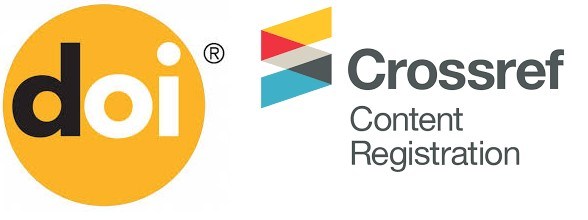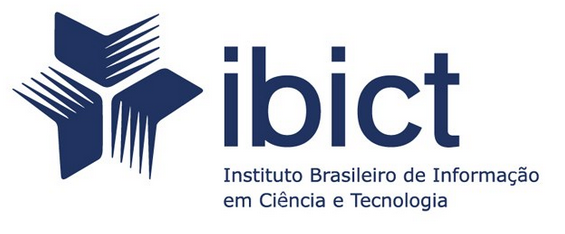UM PANORAMA SOBRE AS DIETAS ARTIFICIAIS ALTERNATIVAS AO SANGUE DE VERTEBRADOS PARA CRIAÇÃO EM MASSA DE Aedes aegypti (DIPTERA: CULICIDAE): UMA REVISÃO SISTEMÁTICA
AN OVERVIEW OF ARTIFICIAL DIETS ALTERNATIVE TO VERTEBRATE BLOOD FOR MASS BREEDING OF Aedes aegypti (DIPTERA: CULICIDAE): A SYSTEMATIC REVIEW
DOI:
https://doi.org/10.37157/fimca.v8i1.217Palavras-chave:
Dietas artificiais, Laboratório, Manutenção, Refeições livre de sangueResumo
As fêmeas Aedes aegypti são responsáveis pela transmissão de diversos patógenos causadores de doenças em seres humanos, como o vírus Dengue (1-4), Chikungunya, Zika e Febre Amarela. A criação desses vetores em laboratório atende a diversas finalidades como, estudos de comportamento, fisiologia, genética, infectividade e susceptibilidade a agentes químicos, no entanto, isso requer a utilização de sangue de vertebrados, o que implica em um grande obstáculo devido ao risco de contaminação ligado ao uso de materiais biológicos, regulamentações éticas, além de ser caro para adquirir e difícil de armazenar por longos períodos. Estudos vêm demonstrando o potencial de possíveis dietas artificiais como substitutos ao sangue de vertebrados na criação massal de Ae. aegypti. Este estudo de revisão tem como objetivo ressaltar a importância da utilização de dieta artificial na criação massal de mosquitos em laboratório. Portanto, buscou-se especificamente realizar um levantamento bibliográfico através de uma revisão sistemática, em que foram verificados os primeiros estudos baseados em dietas artificiais e sua evolução até os dias atuais para Ae. aegypti. De maneira geral, são utilizados nas refeições Soro Albumina Bovina (BSA) como principal fonte proteica para fins de produção de ovos além de outros nutrientes como açúcares, lipídios, vitaminas, fontes de ferro e um sistema tampão adequado e são geralmente disponibilizadas através de alimentadores artificiais por meio de membrana. Podemos concluir que é possível formular uma dieta quimicamente definida para criação massal da referida espécie em substituição ao sangue de vertebrados tornando-se uma abordagem desejável não apenas no ponto de vista financeiro, mas também ético.
Aedes aegypti females are responsible for the transmission of several pathogens causing diseases in humans, such as Dengue virus (1-4), Chikungunya, Zika and Yellow Fever. The rearing of these vectors in the laboratory serves several purposes as, studies of behavior, physiology, genetics, infectivity and susceptibility to chemical agents, however, this requires the use of vertebrate blood, which implies a great obstacle due to the risk of contamination linked to the use of biological materials, ethical regulations, besides being expensive to acquire and difficult to store for long periods. Studies have demonstrated the potential of possible artificial diets as substitutes for the blood of vertebrates in the mass rearing of Ae. aegypti. This review study aims to highlight the importance of using artificial diets in the laboratory rearing of this species. Therefore, it was specifically aimed to perform a bibliographic survey through a systematic review, in which the first studies based on artificial diets and their evolution until the present days for Ae. aegypti were verified. In general, Serum Albumin Bovine (BSA) is used in meals as the main protein source for egg production purposes in addition to other nutrients such as sugars, lipids, vitamins, iron sources and a suitable buffer system and are generally available through feeders. artificial by means of membrane. We can conclude that it is possible to formulate a chemically defined diet for the mass rearing of this species as a replacement for the blood of vertebrates, becoming a desirable approach not only financially, but also ethically.
Referências
ANDERSSON, H. The effect of sugar meals and body size on fecundity and longevity of female Aedes communis (Diptera: Culicidae). Physiological Entomology, v. 17, n. 3, p. 203-207, 1992. <https://doi.org/10.1111/j.1365-3032.1992.tb01011.x>
BARATA, E. A. M. F.; COSTA, A. I. P; NETO, F. C; GLASSER, C. M; BARATA, J. M. S; NATAL, D. População de Aedes aegypti (l.) em área endêmica de dengue, sudeste do Brasil. Revista de Saúde Pública, v. 35, n. 3, p. 237-42, 2001. <https://doi.org/10.1590/S0034-89102001000300004>
BAUGHMAN, T.; PETERSON, C.; ORTEGA, C.; PRESTON, S. R.; PATON, C.; WILLIAMS, J.; GUY, A.; OMODEI, G.; JOHNSON, WILLIAMS, B. H.; O'NEILL, S. L.; RITCHIE, S. A.; DOBSON, S. L.; MADAN, D. A highly stable blood meal alternative for rearing Aedes and Anopheles mosquitoes. PLoS Neglected Tropical Diseases, v. 11, n. 12, e0006142, 2017. <https://doi.org/10.1371/journal.pntd.0006142>
BRIEGEL, H. Mosquito reproduction: incomplete utilization of the blood meal protein for oogenesis. Journal Insect Physiology, V. 31, n. 1, p. 15-21, 1985. <https://doi.org/10.1016/0022-1910(85)90036-8>
BRIEGEL, H. Physiological bases of mosquito ecology. Journal of Vector Ecology, v. 28, n.1, p. 1-11, 2003.
CLEMENTS, A. N. Biology of mosquitões: development, nutrition, and reproduction. Wallingford: CABI Publishing, 1992.
CONSOLI, R. A. G. B.; LOURENÇO-DE-OLIVEIRA, R. Principais mosquitos de importância sanitária no Brasil. Rio de Janeiro: Editora Fiocruz, 1994.
COSGROVE, J. B.; WOOD, R. J. Effects of variations in a formulated protein meal on the fecundity and fertility of female mosquitoes. Medical and veterinary entomology, v. 10, n. 3, p. 260-264, 1996. <https://doi.org/10.1111/j.1365-2915.1996.tb00740.x.>
DIMOND, J. B.; LEA, A. O.; BROOKS, R. F.; DE LONG, D. M. A preliminary note on some nutritional requirements for reproduction in female Aedes aegypti. The Ohio Journal of Science, v. 55, n. 5, p. 209-211, 1955.
DIMOND, J. B.; LEA, A. O.; HAHNERT JR, W. F.; DELONG, D. M. The amino acids required for egg production in Aedes aegypti. The Canadian Entomologist, v. 88, n. 2, p. 57-62, 1956. <https://doi.org/10.4039/Ent8857-2>
DUTRA, H. L C.; RODRIGUES, S. L.; MANSUR, S. B.; OLIVEIRA, S. P.; CARAGATA, E. P.; MOREIRA, L. A. Development and physiological effects of an artificial diet for Wolbachia-infected Aedes aegypti. Scientific Reports, v. 7, p. 15687, 2017. <https://doi.org/10.1038/s41598-017-16045-6>
FITZPATRICK, D. M.; HATTAWAY, L. M.; HSUEH, A. N.; RAMOS-NIÑO, M. E.; CHEETHAM, S. M. PCR-Based bloodmeal analysis of Aedes aegypti and Culex quinquefasciatus (Diptera: Culicidae) in St. George Parish, Grenada. Journal of Medical Entomology, v. 56, n. 4, p. 1170–1175, 2019. <https://doi.org/10.1093/jme/tjz037>
GALUN, R.; KOONTZ, L. C.; GWADZ, R. W. Engorgement response of anopheline mosquitoes to blood fractions and artificial solutions. Physiological Entomology, v. 10, n. 2, p. 145-149, 1985. <https://doi.org/10.1111/j.1365-3032.1985.tb00029.x>
GALUN, R.; OREN, N.; ZECHARIA, M. Effect of plasma components on the feeding response of the mosquito Aedes aegypti L. to adenine nucleotides. Physiological Entomology, v. 9, n. 4, p. 403-408, 1984. <https://doi.org/10.1111/j.1365-3032.1984.tb00781.x>
GAUGLER, R.; SUMAN, D. S.; CHANDEL, K.; WANG, Y. Non-membrane feeding device and diet formulation for mosquito colony production. Patent Application Publication. US/0246608, A1, 2019.
GOMES, A. C.; SOUZA, J. M. P.; BERGAMASCHI, D. P.; SANTOS, J. L. F.; ANDRADE, V. R.; LEITE, O. F.; RANGEL, O.; SOUZA, S. S. L.; GUIMARÃES, N. S. N.; LIMA, V. L. C. Atividade antropofílica de Aedes aegypti e Aedes albopictus em área sob controle e vigilância. Revista de Saúde Pública, v. 39, n. 2, p. 206-210, 2005. <https://doi.org/10.1590/S0034-89102005000200010>
GONZALES, K. K.; HANSEN, I. A. Artificial diets for mosquitoes. International Journal of Environmental Research and Public Health, v. 13, n. 12, p. 1267, 2016. <https://doi.org/10.3390/ijerph13121267>
GONZALES, K. K.; RODRIGUEZ, S. D.; HAE-NA, C.; KOWALSKI, M.; VULCAN, J.; MOORE, E. L.; LI, Y.; WILLETTE, S. M.; KANDEL, Y.; VOORHIES, W. A. V.; HOLGUIN, F. O.; HANLEY, K. A.; HANSEN, I. A. The effect of SkitoSnak, an artificial blood meal replacement, on Aedes aegypti life history traits and gut microbiota. Scientific Reports, v. 8, p. 11023, 2018. <https://doi.org/10.1038/s41598-018-29415-5>
GONZALES, K. K.; TSUJIMOTO, H. and HANSEN, I. A. Blood serum and BSA, but neither red blood cells nor hemoglobina can support vitellogenesis and egg production in the dengue vector Aedes aegypti. PeerJ, v. 3, p. e938, 2015. https://doi.org/10.7717/peerj.938
GONZÁLEZ, F. M. I.; VÁZQUEZ, A. M. J.; SESMA, M. E.; FALCÓN, L. J. A.; GONZÁLEZ, A. C.; CORREA, M. F. Efecto de diferentes fuentes de alimentación sanguínea sobre Aedes aegypti (Diptera: Culicidae) en condiciones de insectario. Horizonte sanitário, v. 18, n. 2, p. 177-183, 2019. <https://doi.org/10.19136/hs.a18n2.2717>
GRIFFITH, J. S. R.; TURNER, G. D. Culturing Culex guinquefasciatus mosquitoes with a blood substitute diet for the females. Medical and Veterinary Entomology, v. 10, n. 3, 265-268, 1996. <https://doi.org/10.1111/j.1365-2915.1996.tb00741.x.>
GUNATHILAKA, N.; RANATHUNGE, T.; UDAYANGA, L.; ABEYEWICKREME, W. Efficacy of blood sources and artificial blood feeding methods in rearing of Aedes aegypti (Diptera: Culicidae) for sterile insect technique and incompatible insect technique approaches in Sri Lanka. BioMed Research International, v. 2017, p. 3196924, 2017. <https://doi.org/10.1155/2017/3196924>
HONÓRIO, N. A.; CASTRO, M. G.; BARROS, F. S. M.; MAGALHÃES, M. A. F. M.; SABROZA, P. C. Padrões da distribuição espacial do Aedes aegypti e Aedes albopictus em uma zona de transição no Rio de Janeiro, Brasil. Caderno de Saúde Pública, v. 25, n. 6, p. 1203-1214, 2009.
INSTITUTO OSWALDO CRUZ (IOC). Dengue, vírus e vetor: Longa trajetória. <http://www.ioc.fiocruz.br/dengue/textos/longatraje.html>. Acesso em: 17 junho de 2020.
KANDEL, Y.; MITRA, S.; JIMENEZ, X.; RODRIGUEZ, S. D.; ROMEROID, A.; BLAKELY, B. N.; CHO, S. Y.; PELZMAN, C.; HANSEN, I. A. Long-term mosquito culture with SkitoSnack, an artificial blood meal replacement. PLOS Neglected Tropical Diseases, v. 14, n. 9, p. e0008591, 2020. <https://doi.org/10.1371/journal.pntd.0008591>
KOGAN, P. H. Substitute blood meal for investigating and maintaining Aedes aegypti (Diptera: Culicidae). Journal of Medical Entomology, v. 27, n. 4, p 709-712, 1990. <https://doi.org/10.1093/jmedent/27.4.709.>
KUNO, G.; GWONG-JEN, J. C. Biological transmission of arboviruses: reexamination of and new insights into components, mechanisms, and unique traits as well as their evolutionary trends. Clinical Microbiology Reviews, v. 18, n. 4, p. 608–637, 2005. <https://doi.org/10.1128/CMR.18.4.608-637.2005.>
LEA, A. O.; DIMOND, J. B.; DELONG, D. M. Role of diet in egg development by mosquitoes (Aedes aegypti). Science, v. 123, n. 3203, p. 890-891, 1956. <https://doi.org/10.1126/science.123.3203.890.>
LEA, A. O.; KNIERIM, J. A.; DIMOND, J. B.; DELONG, D. M. A preliminary note on egg production from milk-fed mosquitoes. The Ohio Journal of Science, v. 55, n. 1, p. 21-22, 1955.
MARCONDES, C. B.; XIMENES, M. F. F. M. Zika virus in Brazil and the danger of infestation by Aedes (Stemogyia) mosquitoes. Revista da Sociedade Brasileira de Medicina Tropical, v. 49, n. 1, p. 4-10, 2016.
MARQUES, J.; CARDOSO, J. C. R.; FÉLIX, R. C.; POWER, D. M.; SILVEIRA, H. A Blood-free diet to rear anopheline mosquitoes. Journal of Visualized Experiments, v. 31, n. 155, e60144, 2020. <https://doi.org/10.3791/60144.>
MOHER, D.; LIBERATI, A.; TETZLAFF, J.; ALTMAN, D. G. Preferred Reporting Items for Systematic Reviews and Meta-Analyses: The PRISMA Statement. PLoS Med, v. 6, n. 7, p. e1000097, 2009. <https://doi.org/10.1371/journal.pmed.1000097>
NAYAR, J. K.; SAUERMAN, JR. D. M. A comparative study of flight performance and fuel utilization as a function of age in females of Florida mosquitões. Journal of Insect Physiology, v. 19, n. 10, p. 1977- 1988, 1973. <https://doi.org/10.1016/0022-1910(73)90192-3>
NAYAR, J. K.; SAUERMAN, JR. D. M. The effects of nutrition on survival and fecundity in florida mosquitoes. Part 3. Utilization of blood and sugar for fecundity. Journal of Medical Entomology, v. 12, n. 2, p. 220-225, 1975. <https://doi.org/10.1093/jmedent/12.2.220>
PHASOMKUSOLSIL, S.; TAWONG, J.; MONKANNA, N.; PANTUWATANA, K.; DAMDANGDEE, N.; KHONGTAK, W.; KERTMANEE, Y.; EVANS, B, P.; SCHUSTER, A, L. Maintenance of mosquito vectors: effects of blood source on feeding, survival, fecundity, and egg hatching rates. Journal of Vector Ecology, v. 38, n. 1, p. 38-45, 2013. <https://doi.org/10.1111/j.1948-7134.2013.12006.x>
RAIKHEL, A. S.; KOKOZA, V. A.; ZHU, J.; MARTIN, D.; WANG, S.; LI, C.; SUN, G.; AHMED, A.; DITTMER, N.; ATTARDO, G. Molecular biology of mosquito vitellogenesis: from basic studies to genetic engineering of antipathogen immunity. Insect Biochemistry and Molecular Biology, v. 32, n. 10, p. 1275–1286, 2002. <https://doi.org/10.1016/s0965-1748(02)00090-5>
RAINEY, S. M.; SHAH, P.; KOHL, A.; DIETRICH, I. Understanding the Wolbachia-mediated inhibition of arboviruses in mosquitoes: progress and challenges. Journal of General Virology, v. 95, n. 3, p. 517–530, 2014. <https://doi.org/10.1099/vir.0.057422-0>
RICHARDS, S, L.; ANDERSON, S, L.; YOST, S, A. Effects of blood meal source on the reproduction of Culex pipiens quinquefasciatus (Diptera: Culicidae). Journal of Vector Ecology, v. 37, n. 1, p. 1-7, 2012. <https://doi.org/10.1111/j.1948-7134.2012.00194.x>
ROUBAUD, E. Cycle autogene d’attente et generations hivrenales suractives inaparentes chez le moustique commun Culex pipiens. Comptes rendus de l'Académie des Sciences v. 188, p. 735-738, 1929.
TALYULI, O. A. C.; BOTTINO-ROJAS, V.; TARACENA, M, L.; SOARES, A. L. M.; OLIVEIRA, J. H. M.; OLIVERIA, P. L. The use of a chemically defined artificial diet as a tool to study Aedes aegypti physiology. Journal of Insect Physiology, v. 83, p. 1–7, 2015. <https://doi.org/10.1016/j.jinsphys.2015.11.007>
TAUIL, P. L. Aspectos críticos do controle do dengue no Brasil. Caderno de Saúde Pública, v. 18, n. 3, p. 867-871, 2002. <https://doi.org/10.1590/S0102-311X2002000300035>
VASCONCELOS, P. F. C. Doença pelo vírus Zika: um novo problema emergente nas Américas? Revista Pan-Amazônica de Saúde, v. 6, n. 2, p. 9-10, 2015. <https://doi.org/10.5123/S2176-62232015000200001>
VASCONCELOS, P. F. C. Febre amarela. Revista da Sociedade Brasileira de Medicina Tropical, v. 36, n. 2, p. 275-93, 2003.
VASCONCELOS, P. F. C. Yellow fever in Brazil: thoughts and hypotheses on the emergence in previously free areas. Revista de Saúde Pública, v. 44, n. 6, p. 1144-1149, 2010. <https://doi.org/10.1590/s0034-89102010005000046>
VASCONCELOS, P. F.C.; CALISHER, C. H. Review: emergence of human arboviral diseases in the Americas, 2000–2016. Vector-Borne and Zoonotic Diseases, v. 16, n. 5, p. 205-301, 2016. <https://doi.org/10.1089/vbz.2016.1952>
WALKER, T.; JOHNSON, P.; MOREIRA, L.; ITURBE-ORMAETXE, I.; FRENTIU, F.; MCMENIMAN, C.; LEONG, Y. S.; DONG, Y.; AXFORD, J.; KRIESNER, P. The wMel Wolbachia strain blocks dengue and invades caged Aedes aegypti populations. Nature, v. 476, p. 450–453, 2011. <https://doi.org/10.1038/nature10355>
WEAVER, S. C.; BARRETT, A. D. T. Transmission cycles, host range, evolution and emergence of arboviral disease. Nature Reviews Microbiology, v. 2, n. 10, p. 789–801, 2004. <https://doi.org/10.1038/nrmicro1006.>
WORD HEALTH ORGANIZATION (WHO), 2020. Dengue and severe dengue: Key facts. <https://www.who.int/news-room/fact-sheets/detail/dengue-and-severe-dengue> Acesso em: 27 de julho de 2020.
XUE, R.; ALI, A.; BARNARD, D, R. Host species diversity and post-blood feeding carbohydrate availability enhance survival of females and fecundity in Aedes albopictus (Diptera: Culicidae). Experimental Parasitology, v. 119, n. 2, p. 225-228, 2008. <https://doi.org/10.1016/j.exppara.2008.01.007.>
ZHOU, G.; MIESFELD, R. Differential utilization of blood meal amino acids in mosquitoes. Dove Press Journal. v. 2009, n. 1, p. 1-12, 2009. < https://doi.org/10.2147/OAIP.S7160>
ZHOU, G.; PENNINGTON, J. E.; WELLS, M. A. Utilization of pre-existing energy stores of female Aedes aegypti mosquitoes during the first gonotrophic cycle. Insect Biochemistry and Molecular Biology, v. 34, n. 9, p. 919–925, 2004. <https://doi.org/10.1016/j.ibmb.2004.05.009.>
Publicado
Como Citar
Edição
Seção
A Revista FIMCA disponibiliza seus artigos e resumos para livre acesso de forma permanente e gratuita nos termos da Creative Commons Attribution License, permitindo que a sociedade possa compartilhar (copiar e redistribuir o material em qualquer suporte ou formato para qualquer fim, mesmo que comercial) e adaptar (remixar, transformar, e criar a partir do material para qualquer fim, mesmo que comercial), desde que seja dado o devido crédito apropriado, provendo um link para a licença e indicar se mudanças foram feitas.
Vale a pena ressaltar, que mesmo que o material seja transformado, modificado, ou der origem a outro material, este deve ser distribuido respeitando obrigatoriamente a citação do original nos termos da licença CC BY-AS 4.0 DEED.

















